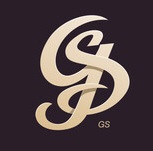ADVANCED NDT SERVICES
PHASED ARRAY ULTRASONIC TESTING (PAUT)
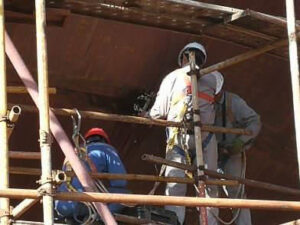
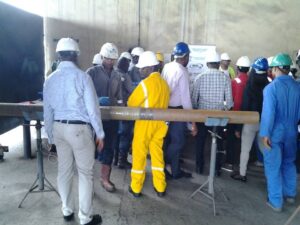
Corrosion Mapping
High Temperature PAUT up to 200°C (Weld Inspection/Corrosion Mapping)
PAUT Alternative to Radiological Inspection (ASME Sec VIII, API 620, ASME B31.3, B31.1 ).
TIME OF FLIGHT DIFFRACTION (TOFD)
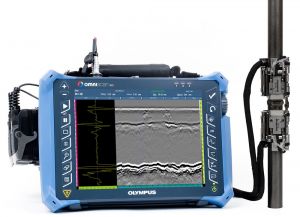
Time of Flight Diffraction (TOFD) Time of Flight Diffraction (TOFD) can be used for a variety of applications, but its primary application is rapid weld inspection of circumferential and axial welds, also known as vertical TOFD scans.
Since the introduction of TOFD in the 1970s, the use of this reliable non-destructive testing technology has steadily increased. Although it can be performed manually using TOFD, it is most often performed in conjunction with a recording device such as an encoder or industrial scanner. To achieve regulatory compliance in North America, TOFD is often combined with pulse-echo or phased array technology to cover the root and cap area of the weld.
APPLICATIONS
Weld inspection – Structural / Piping
ToFD in lieu of Radiography Testing (ASME Sec VIII, API 620, ASME B31.3, B31.1)
COMPANY’S CREDENTIALS/APPROVALS/ACCREDIDATION:
IS/IEC – 17025
SAC-SINGLAS
PERSONNEL QUALIFICATIONS
PCN, CSWIP, ASNT Level 2/3
ALTERNATING CURRENT FIELD MEASUREMENT TESTING (ACFM)
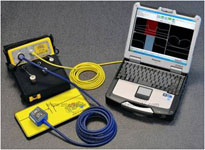
ACFM® is an electromagnetic testing technique that detects surface cracks by injecting an alternating current into the surface of a component. The presence of a crack disturbs the electromagnetic field, and advanced mathematical techniques instantly convert the reflected signal to alert the operator to the presence of a flaw. Immediate defect sizing and recording is a major advantage compared to alternative his NDT methods.
APPLICATIONS
Marine offshore Structures/ Offshore Platforms/Rigs/Semi Sub Rigs/ Barges
It requires less cleaning compared to MPI/PT/ECT
When data requires to keep for records/re review/cross check
No need to remove paint / Fast method
COMPANY’S CREDENTIALS/APPROVALS/ACCREDITATION
IS/IEC – 17025
SAC-SINGLAS
PERSONNEL QUALIFICATIONS
CSWIP, ASNT Level 2
OPEN VISION
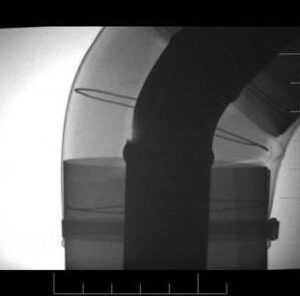
Corrosion under insulation (CUI) is corrosion of pipes and vessels that occurs under insulation as a result of water ingress. Water can come from rainwater, leaks, floods, laundry water, or condensation from temperature fluctuations or low-temperature operations such as refrigeration equipment.
Unfortunately, because corrosion is hidden beneath the insulation, CUI often goes undetected until the insulation is removed for inspection or a leak occurs. CUI is a common problem in many industries including refining, petrochemical, energy, industrial, onshore and offshore industries.
INSPECTION METHODS
Long Range UT
Computed Radiography (CRT)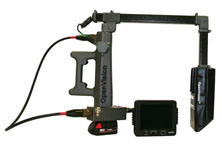
Digital Radiography (DRT)
Profile Radiography
Real Time Radiography (Open Vision)
PERSONNEL QUALIFICATIONS
API Piping Inspector (API 570)
TRACK RECORD
Exxom Mobil (Open Vision)
Shell Eastern Petroleum, Bukom Terminal (Open Vision, Profile Radiography
MISC Malaysia (Computed Radiography)
COMPUTER RADIOGRAPHY TESTING (CRT)
Computed Radiography (CR) is the production of a digital image by using a Phosphor Imaging Plate (IP) in place of conventional film.The Image (storage) Plate (IP) is exposed with X-ray or Gamma radiation, which causes the IP phosphor layer in the plate to store the X-ray image. During the reading process of the plate in the scanner, a focused laser beam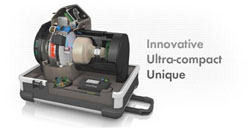 triggers the release of the stored image data in the form of visible light. The emitted light is detected, captured, and converted into electrical signals which are digitized and finally displayed as a digital image on the PC monitor. The internal in-line eraser purges the residual data from the IP, which is then ready for the next exposure.
triggers the release of the stored image data in the form of visible light. The emitted light is detected, captured, and converted into electrical signals which are digitized and finally displayed as a digital image on the PC monitor. The internal in-line eraser purges the residual data from the IP, which is then ready for the next exposure.
APPLICATIONS
Corrosion, Pitting in Insulated Pipelines
Process Pipelines Corrosion Findings
No need to remove insulations
Weld Inspection for Quick Review Profile Radiography for Corrosion Findings
COMPANY’S CREDENTIALS/APPROVALS/ACCREDITATION
ISO/IEC – 17025
SAC-SINGLAS
PERSONNEL QUALIFICATIONS:
NDT Level II / PCN
TRACK RECORDS:
EMAS Offshore, MISC Malaysia, Cochin Refineries India
SembCorp
DIGITAL RADIOGRAPHY (DRT)
An X-ray beam is focused at the imaging detector. In medical applications the anatomy of the patient that needs to be examined is positioned in front of the detector. As the beam passes through the anatomy and hits the detector it is filtered by a scintillator.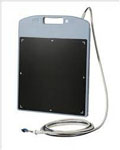
The scintillator comes in different substrate materials and in this application it is most often Cesium Iodide (CsI) or Gadolinium Oxysulphide or Gaddox (GdOS). The scintillator emits light from exposure to the X-ray beam and is deflected by a mirror on to a lens which focuses the light onto the 9 or 16 Megapixels of the CCD dependant of the platform of IDC technology.
APPLICATIONS
Corrosion, Pitting in Insulated Pipelines
Process Pipelines Corrosion Findings
No need to remove insulations
Weld Inspection for Quick Review
Profile Radiography for Corrosion Findings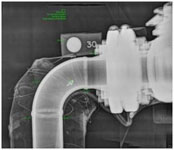
PERSONNEL QUALIFICATIONS
NDT Level II / PCN
Small Controlled Area Radiography (SCAR) SCAR-a directional gamma radiography system for use in areas congested with workers, confined spaces, or where radiation output must be kept to an absolute minimum so not to disrupt normal operations. SCAR utilizes a compact exposure device with built-in collimation to enhance the ability for radiographic inspection to be performed more safely and with equal, if not higher, levels of productivity compared to traditional gamma exposure devices. SCAR allows for smaller restrictive barricades, eliminates flash dose to radiographic personnel, and may increase the overall productivity of radiography crews when utilized in congested areas where increased manpower is present, such as plant shutdowns.
performed more safely and with equal, if not higher, levels of productivity compared to traditional gamma exposure devices. SCAR allows for smaller restrictive barricades, eliminates flash dose to radiographic personnel, and may increase the overall productivity of radiography crews when utilized in congested areas where increased manpower is present, such as plant shutdowns.
APPLICATIONS
Radiation Barricade distance only 5M Radius
No need to Stop other activities
Can be used with Se75 Source which gives high quality Radiographs
COMPANY’S CREDENTIALS/APPROVALS/ACCREDIDATION:
ISO/IEC – 17025
SAC-SINGLAS
PERSONNEL QUALIFICATIONS
NDT Level II / PCN
TRACK RECORDS:
TIMAS OFFSHORE, EMAS Offshore, Keppel Group
Sembawang Shipyard
